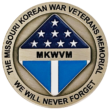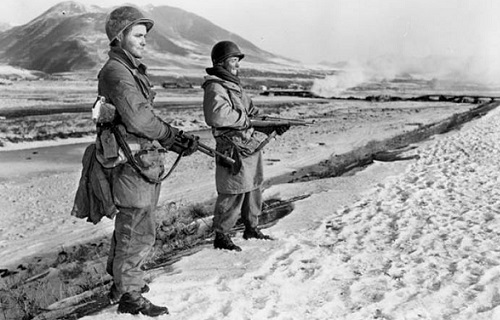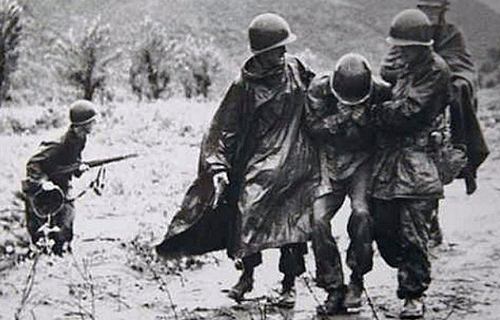
Throughout the war in Korea, U.S. and United Nations (UN) troops were taken as Prisoners of War (POW) by the North Korean People’s Army (NKPA) or Chinese Communist Forces (CCF). There were many camp and holding points littered across North Korea; different camps became more populated at different times of the conflict.
The Korean War began with the sudden advance of the NKPA through the unprepared South in July of 1950. U.S. forces sent to South Korea during this period were organized into the “Pusan Perimeter,” a defensive formation around the critical harbor at Pusan, South Korea. Men captured during this period were marched north by stages through Seoul and Pyongyang to the Manpo Camp on the South bank of the Yalu River in North Korea.
Following the Inchon Landings and breakout from the Pusan Perimeter in September of 1950, U.S. and UN forces turned the tide of the conflict and began pushing into North Korea. As the NKPA retreated farther north, they were forced to evacuate their prisoners with them. In late October of 1950, over 800 POWs left Manpo for village camps closer to the Chinese border near Chungung, known as the Apex Camps. These movements became known as the “Tiger Death March,” so called for the brutal treatment that the prisoners suffered at the hands of the North Korean colonel who was in charge, himself nicknamed “The Tiger.” Many prisoners died during this 100-mile march through difficult terrain. The “Tiger Group” stayed at the Apex camps until October of 1951, when they were moved to more permanent camps further south on the banks of the Yalu River. At that point, less than half of the prisoners who had left Manpo a year earlier were still alive.
By November of 1950, U.S. and UN forces had advanced precipitously close to the North Korean border with China. It was then that the CCF launched a large-scale surprise attack against UN troops near Unsan, Kunu-ri, and the Chosin Reservoir. Overwhelmed, U.S. forces in North Korea were forced on a withdrawal southward. POWs taken by the CCF during this period were marched to holding villages in the Pukchin-Tarigol Valley and Kanggye. The winter season made life for prisoners even more desperate. These men were gradually marched to newly completed permanent camps on the banks of the Yalu River. The first of these camps, known as Camp 5, began taking on POWs in January of 1951. Camp 1 opened in April of that year, and Camp 3 that summer. Specialized camps were eventually erected in this area, Camp 4 for sergeants and Camp 2 for officers and aviators.

Following the CCF’s intervention, the communists used their renewed momentum to push back into South Korea, capturing Seoul for a second time in Spring of 1951. Men were captured at Hoengsoong, Chorwon, Kumhwa, and in the mountains east of Chunchon. These POWs were marched to large holding camps near Suan, North Korea, known as the “Bean Camp” and the “Mining Camp.” Some of the men held here were sent to specialized interrogation camps at “Pak’s Palace” and “Pike’s Peak.” Most who were deemed fit enough to travel were forced to march north to Camp 1 and Camp 5.
In July of 1951, the UN had dissolved the communist offensive and brought the conflict to a tense stalemate in the center of the peninsula, roughly along the modern-day Demilitarized Zone. Fewer men were captured at this time, as the two sides battled for incremental gains in territory to improve their position in ongoing negotiations to end the war. UN troops who were taken POW at this time were taken through Suan to Camp 1 or Camp 5.
Though held in many different places, American POWs in North Korea suffered through similarly harsh treatment. They received little to no food or water and were often forced to trek long distances through severe weather. Those who collapsed or could not continue on these marches were killed by guards. Those who died along march routes were often given isolated burials at unrecorded locations, if buried at all. Disease ran rampant at the camps, with many prisoners succumbing to malaria and beriberi due to the inadequate medical treatment they received. Those who died at camps were buried at nearby camp or hospital cemeteries. Many of the remains returned to U.S. custody during the postwar exchange of dead, Operation Glory, were recovered from these burial sites near POW camps. U.S. investigators have been given very limited access to prospective burial sites in North Korea.
Content sourced from: Defense POW/MIA Accounting Agency


